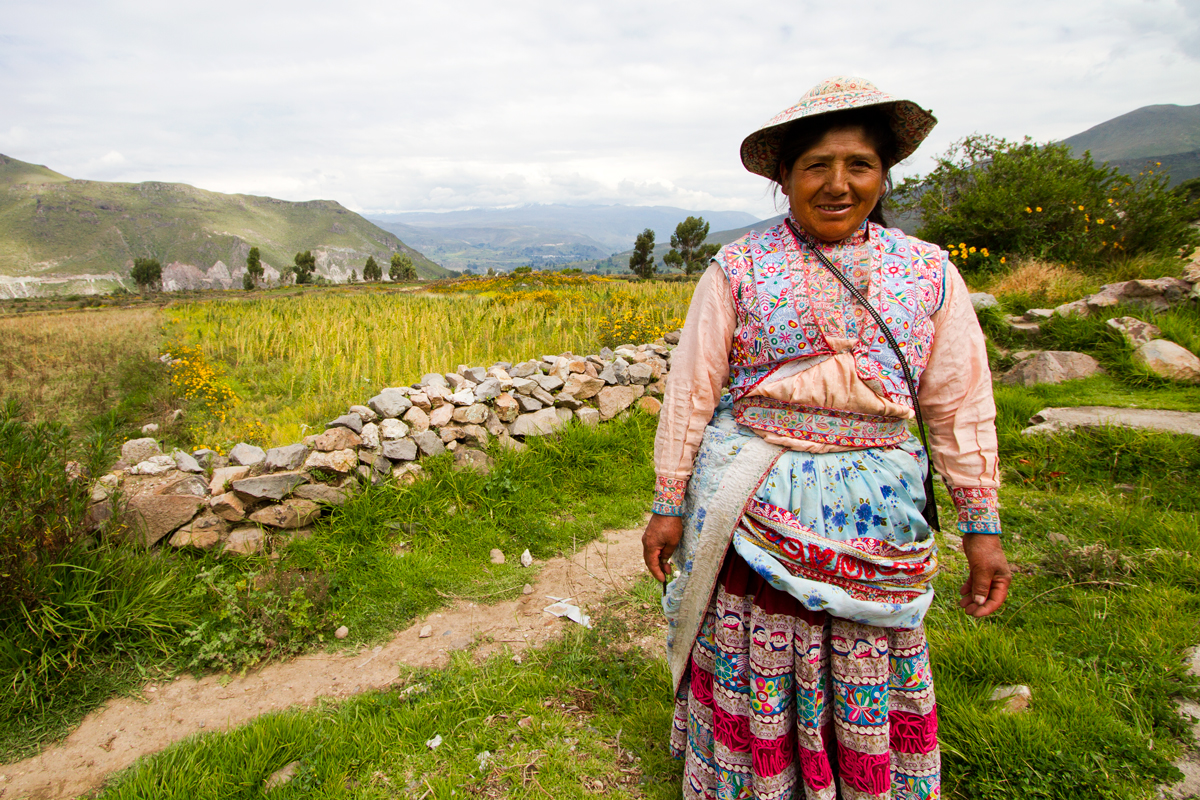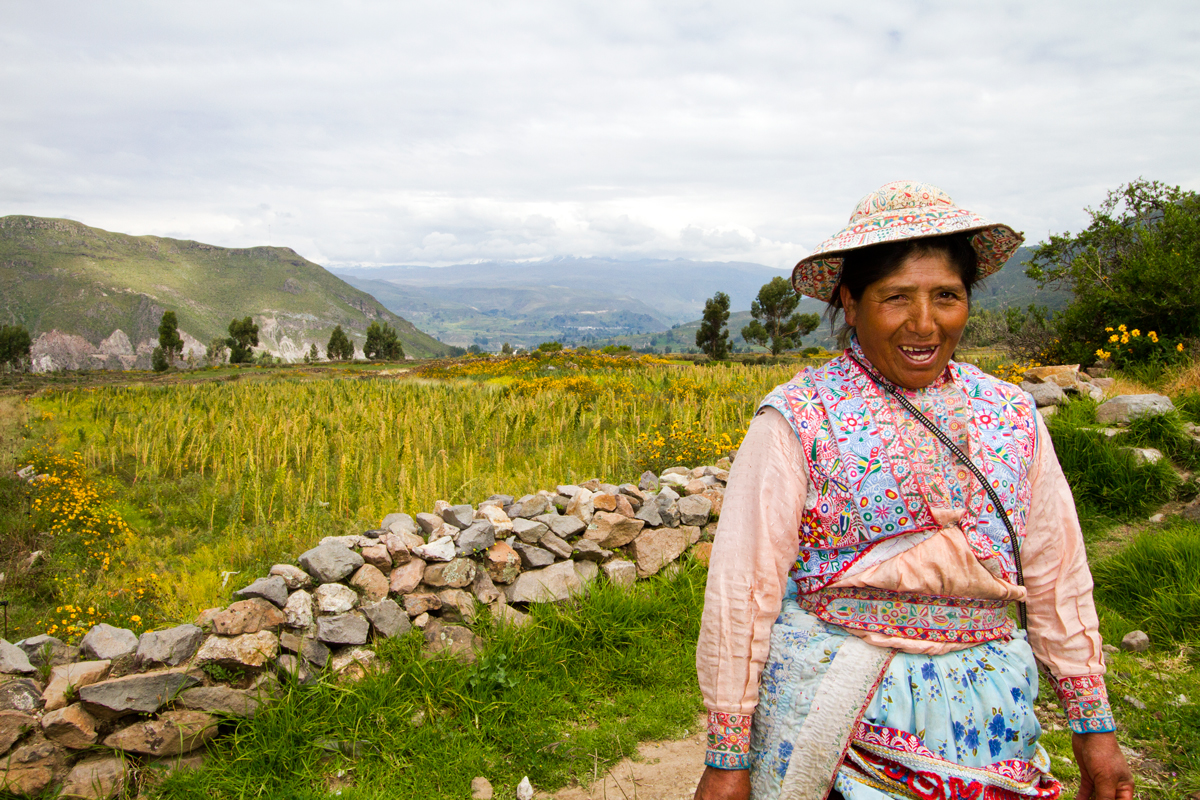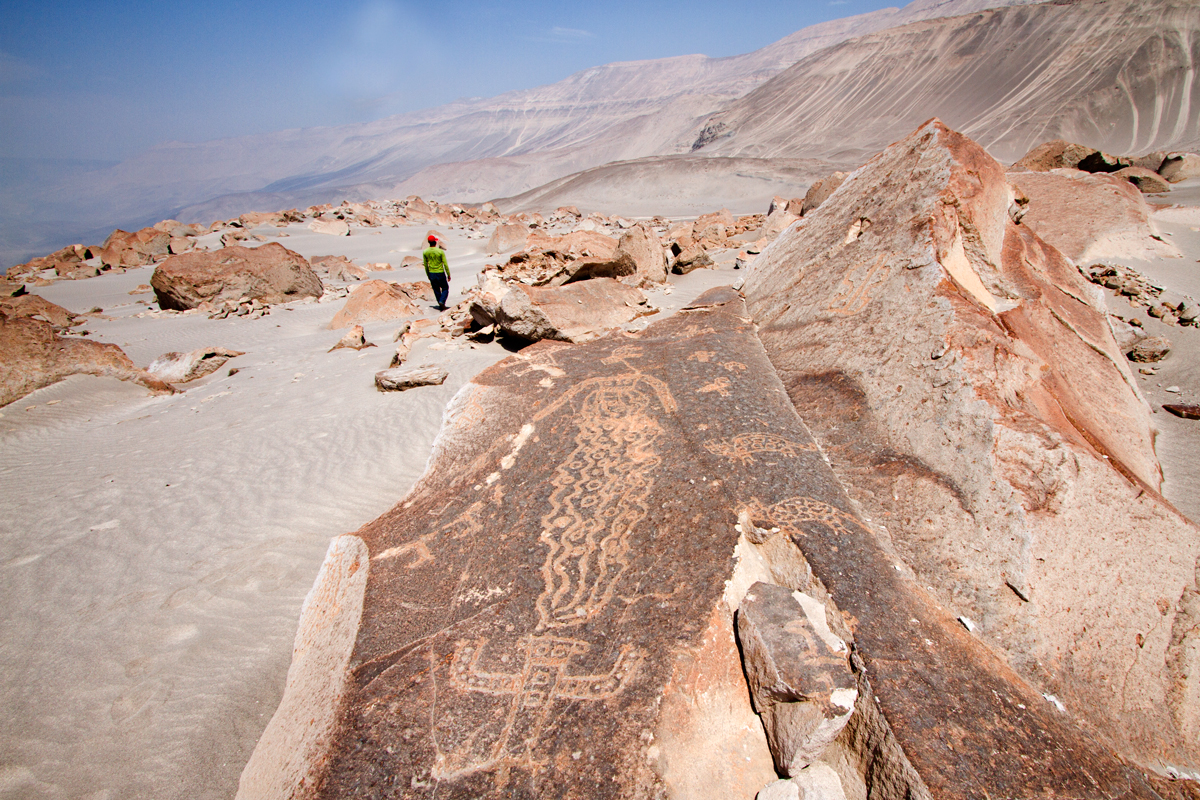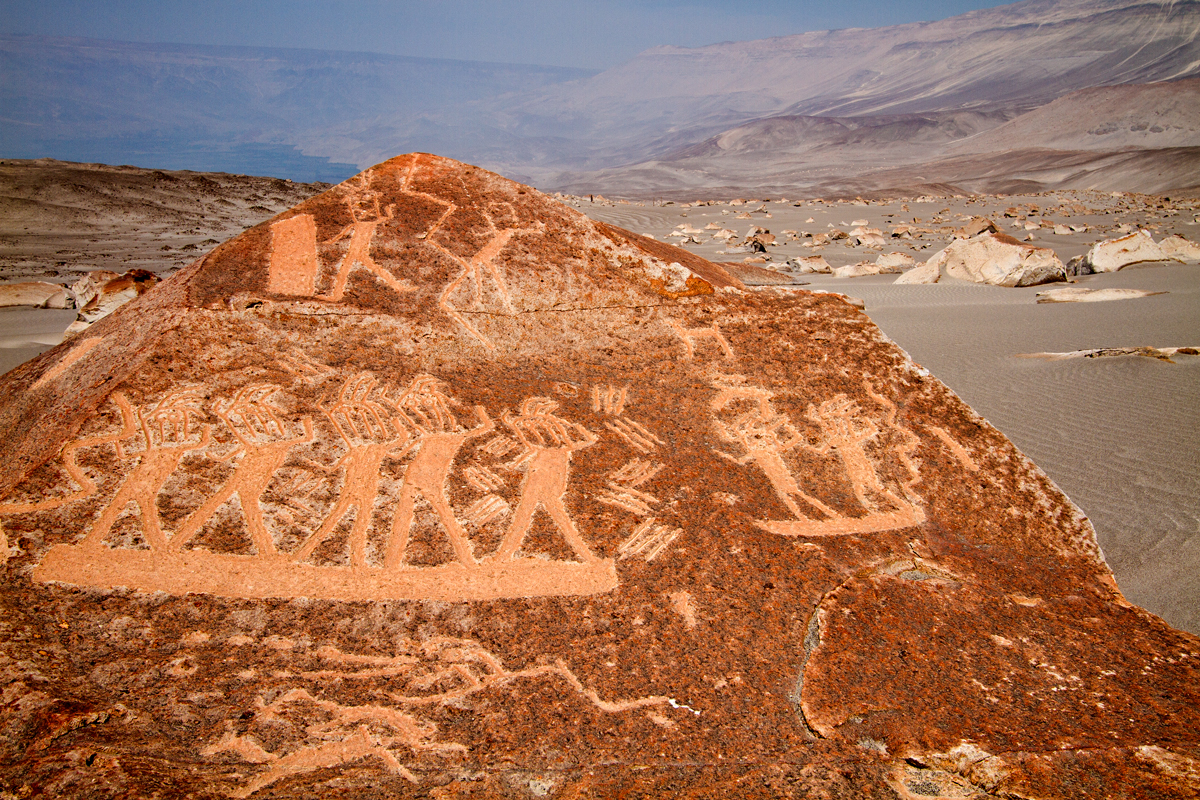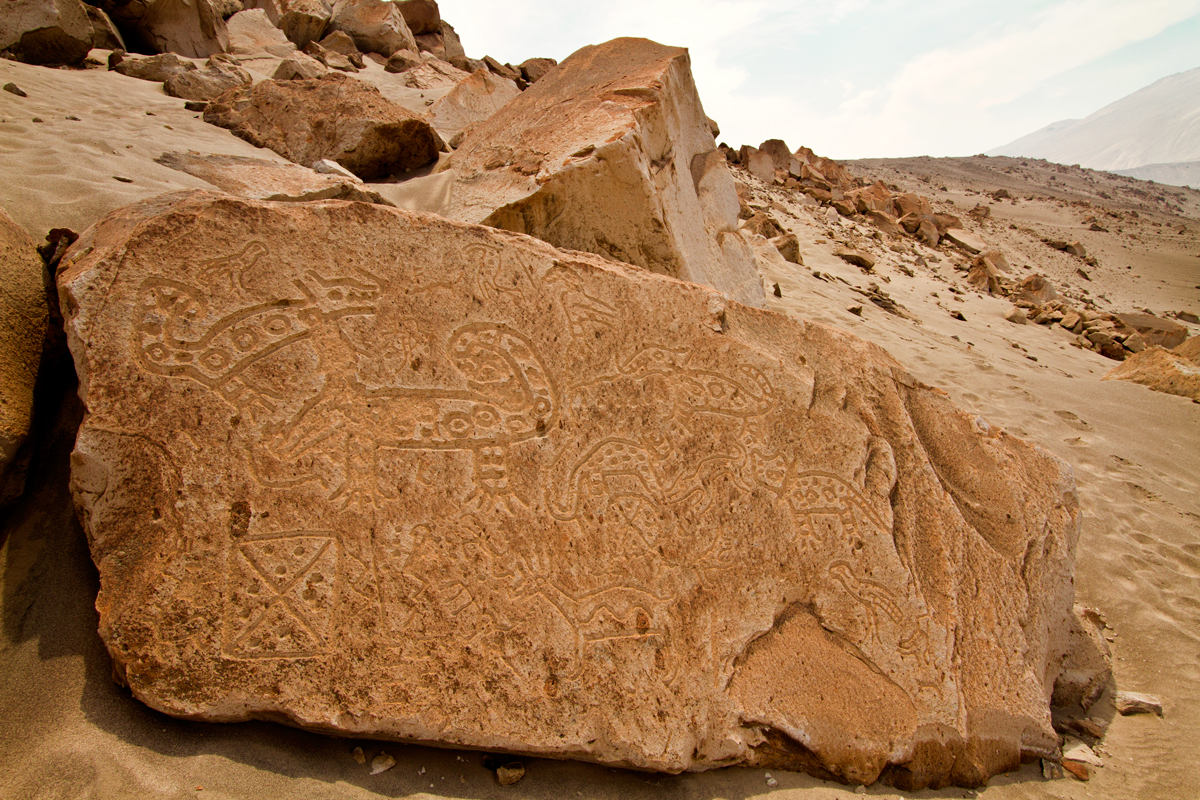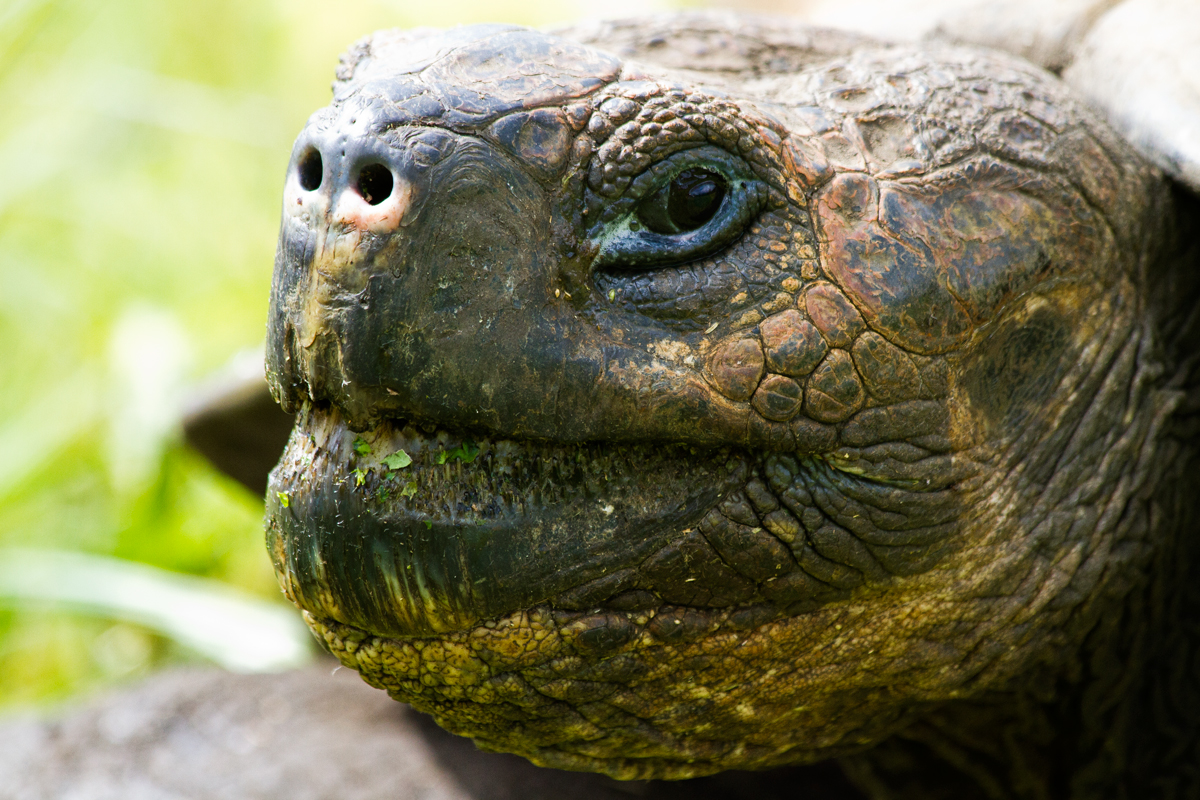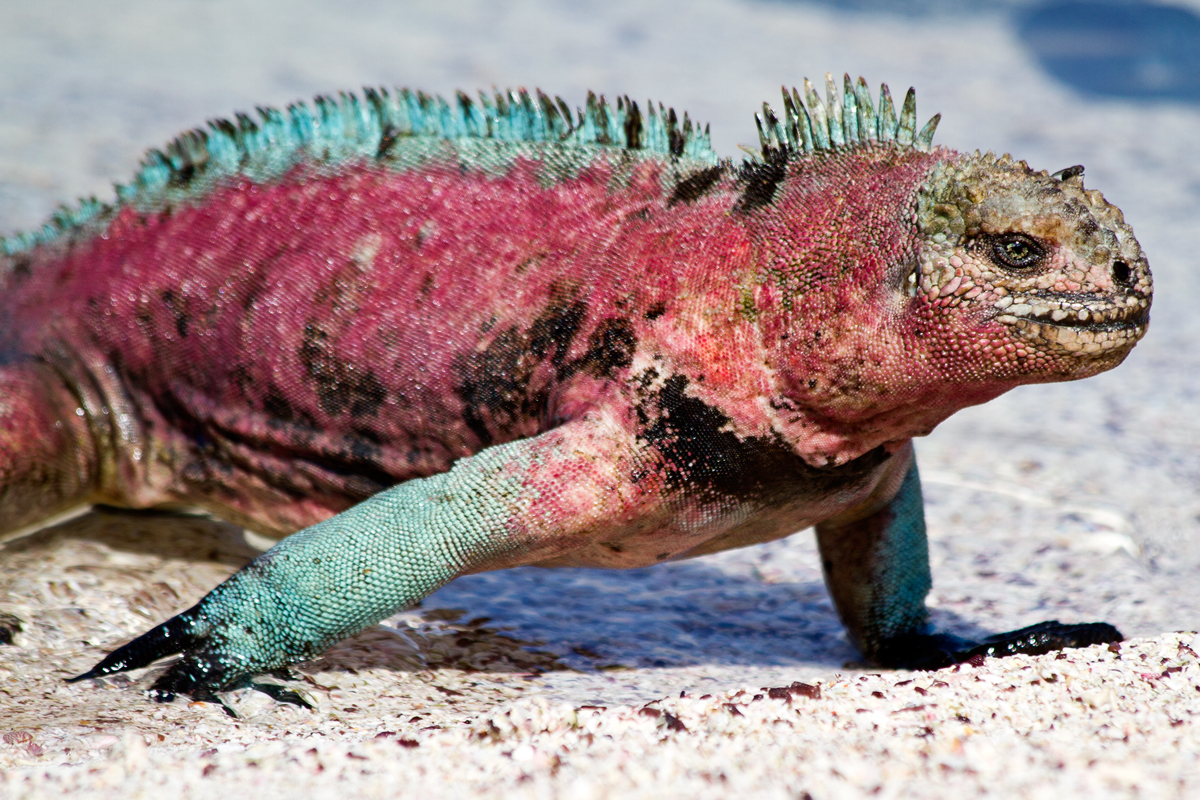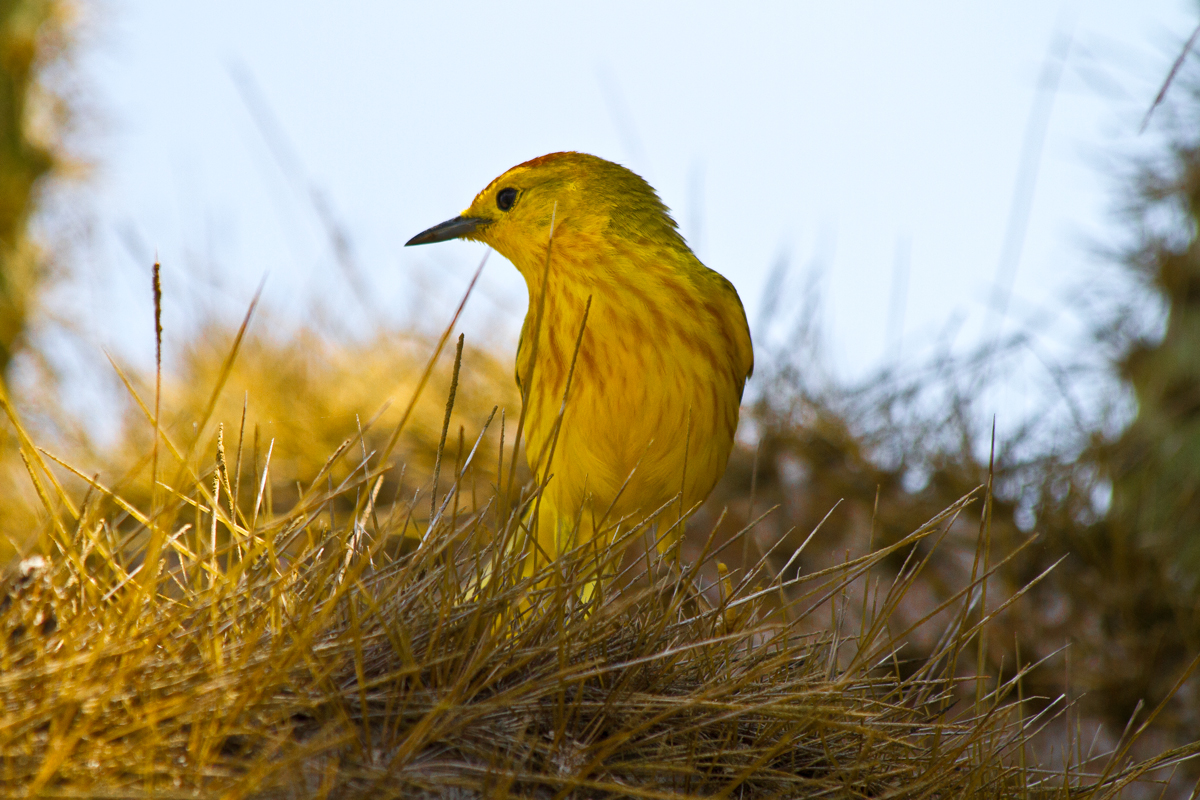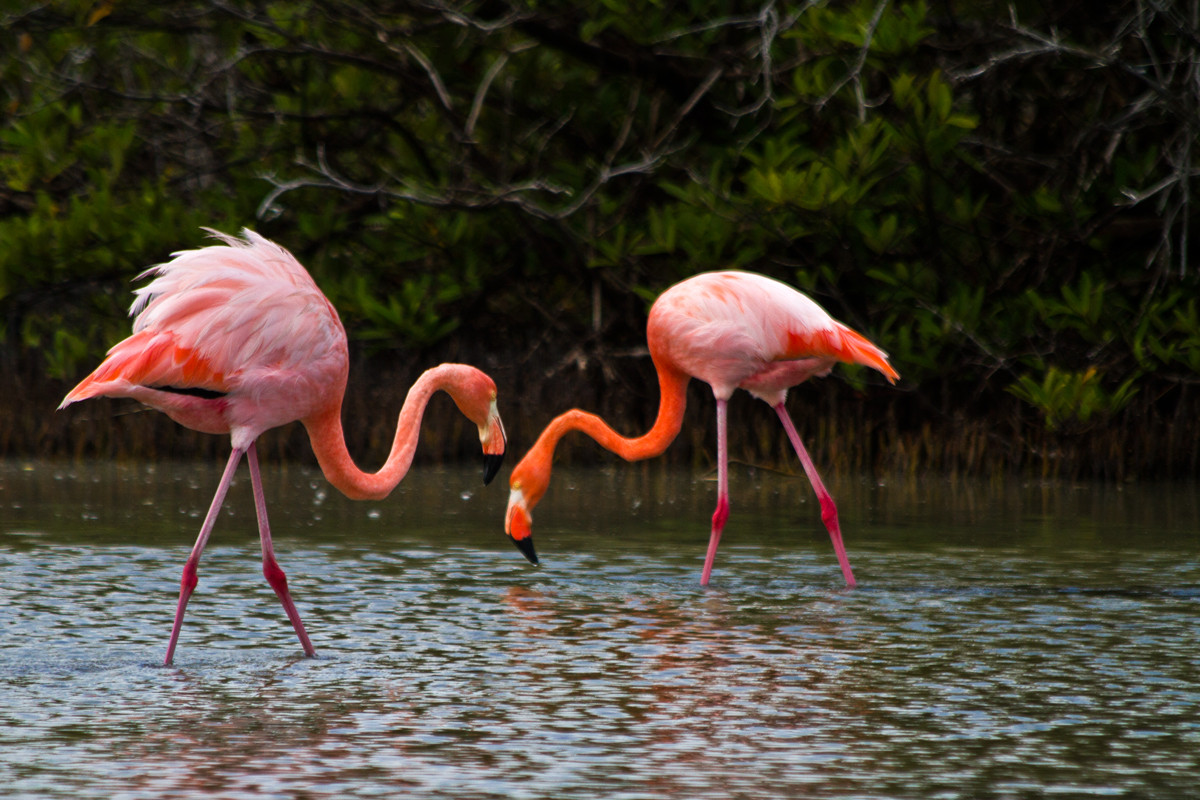
Author: Mollie Bloudoff-Indelicato

How to Get Into (and Around) Lima From the Airport
Don’t rely on your hostel/hotel’s transportation! They’ll overcharge you, and getting a taxi at the airport is simple.
Take Green Taxi from the airport to your destination. It’s 50 soles (Peruvian currency) or $20.
Fifty soles is the better deal. You can exchange some money at the airport, and then exchange money on the street later where you’ll get a MUCH better rate. (NOTE: Most people on the route to Machu Picchu accept cash only!)
To get back to the airport, use a service called EasyTaxi. Download it to your phone, type in your location, and a safe cab will pick you up within 5 minutes. Getting around Lima shouldn’t cost you more than 20 soles (~$6). The app even tells you how much the fares are beforehand so there’s not confusion, bargaining or cheating!
The app gives you the option to connect your credit card, but just pay in soles for everything. Also note that cabbies rarely have exact change so try and carry as many coins as possible.
You can also use EasyTaxi to get around Lima and Cusco. You should avoid using local cabs because it’s oh-so common to get robbed in a cab.

How to Get to Inca Temple Ruins, Puno
Lake Titicaca in Puno is a must-see Peruvian attraction, but it’s definitely a tourist trap.
For those who want to get off the beaten path for a few hours, this Inca temple is on my Top 10 Things to Do in Puno list. It’s a fantastic, short (45 min) hike. The view is spectacular; the temple has several “rooms” to explore, and (my favorite) you won’t see another tourist for miles.
Lonely Planet has a blurb on how to get there, but they have you climb up the back of the mountain, which is very challenging. After exploring a bit, the Significant Other and I came up with a (we think) much easier route.
Here’s how to get to the Inka temple ruins outside of Puno:

Inka Burial Tomb, Coporaque
I hope Pachamama likes peanut butter and jelly sandwiches.
It’s tradition to give the first sip of an alcoholic beverage to Pachamama, the Peruvian version of Mother Earth. Lacking anything more fermented than peach jelly left out in the sun, I dropped a piece of crust into a patch of flowers. If Madre Tierra didn’t appreciate it, the beetles might’ve.
Locals told us it would take about half an hour to climb from the town of Coporaque, Peru to Yuraq-Qaqa, the Incan burial tombs. That, of course, meant it took us a full hour. Altitude is a bitch.
Though we didn’t see anyone else on the trail, the tombs are highly trafficked. Coca leaves and Peruvian coins litter haphazard piles of vertebrae, splintered jaw bones and dirty swatches of burial cloth.
In the U.S., I don’t believe in spirits, but in Peru, I’m firmly convinced they exist. So I was more than a little nervous to scale the burial towers. Exploring tomb after tomb took me farther and farther into the underbrush bearding the steep side of the mountain—perfect hidey holes for malicious duendes.
Barricaded by an enclave of bramble, I found myself squinting up at a small tomb two stories off the ground. My stomach did a quick somersault and settled comfortably into queasy. I was scared. So I was gonna climb that sucker. Por supuesto.
Childhood summers spent in the walnut orchard back home paid off handsomely, and my lack of youthful elasticity was mercifully forgiven by a few handily placed stones. The view from the tomb top was gorgeous and dizzyingly terrifying. The tomb itself soon became a crawl space, and after hoisting myself the last few feet, I had to admit there’s a definite line between conquering fears and being stupid. So I started the (even scarier) journey back down to (relative) safety.
Thunder ricocheted off adjoining summits, and I scrambled back to Significant Other, who was quietly contemplating life next to a Hamlet-esque skull. We scurried down the mountain—stomachs full and curiosity satiated but a tad uneasy. I looked back. The skull wished us farewell with its vacant sockets. *shudder
Hopefully duendes like PB&J, too…
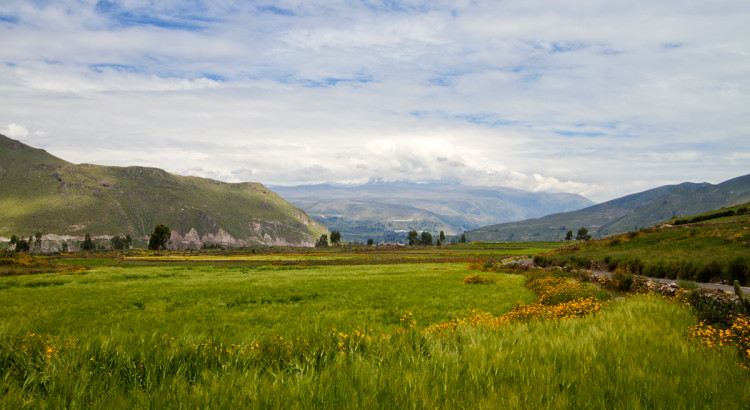
Chivay, Peru
I caught Teresa at a bad time.
She was struggling to open an iron sluice. Irrigation ditches surrounded her, turning her house into a peninsula jutting out from the road. I strolled off the path and hopped over a channel, introducing myself as I ducked under a clothesline.
The Colca Canyon’s undulating hills are so green they made me wince; the breeze so disparate, my ears were inundated by nuance.
I’d just walked for several hours along a country road and seen far too many jagged mountain peaks, valleys of wildflowers and plentiful cropland. The place is a photography newb’s wet dream—close a shutter and develop a masterpiece.
The outskirts of Chivay are so beautiful, they’re almost disagreeable. I wanted the order of another human voice. My eyes clung to Teresa’s outfit, begging for anything other than #00ff00.
We took turns. Me fruitlessly tugging at metal and her, more productively, whacking the thing with a stone to try and jar it loose. After a few minutes, she stood and seamlessly transitioned into her next, more achievable, task.
Teresa and I walked and talked for a while. She was going to another house down the road to get some cheese. Along the way I asked her about different varieties of quinoa and discovered haba.
We talked about her hat, which is ornately embroidered with animals and symbols. This means she’s a descendant of the Cabanas, one of two tribes occupying the Colca Canyon. I asked her where she’d bought it. She gestured back the way I’d just come.
The brilliantly dressed woman and I parted ways at the edge of a field. She made her way through a forest of yellow flowers, and I kept pounding the pavement.

Top Things to Do: Arequipa, Peru
Transportation in Arequipa
- Before we get to the fun stuff, here are some tips on getting around Arequipa.
- There are two bus stations in Arequipa: Terminal Terrestre and Terrapuerto. Luckily they’re right next to each other!
- The bathrooms are pretty clean as far as terminal restrooms go. s./0.50 for bathroom + a little toilet paper
- The terminals themselves have LOTS of snack options, breads, candies and chocolates
- When you’re leaving the terminals, grab a taxi on the main road and avoid those parked in the parking lots—those ones will overcharge you. The cost of a taxi from each terminal to near the Plaza Mayor is s./7
Getting to Monasterio Santa Catalina in Arequipa
- Note: The opening times on the monastery’s website are INCORRECT. Here are the times listed on the building itself as of mid-April, 2015:
- Tues and Thurs nights 9 a.m. to 8 p.m. from Jan. – April
- Mon, Weds, Fri, Sat 9 a.m. to 5 p.m. from Jan. – April
- The cost is s./40 pp (which is CRAZY expensive), and they take Visa, AmEx, MasterCard
- If you can avoid it, don’t bring your backpack because they’ll make you check it, and that’s never safe.
- We didn’t end up going in because the opening times on their website were incorrect (*sigh, oh Peru), but we’ve heard a guided tour is best rather than exploring yourself.
Getting to Toro Muerto From Arequipa
- Go to the bus station (either one) and book a ticket with Transporte Del Carpio to the town Corires s./12.
- The trip takes a little more than three hours because of stops along the way. Make sure to buy return ticket as soon as you arrive in Corire because posted times are unreliable and, in our case, the bus was almost full for the ride home! You don’t want to get stuck in this town.
- If Transporte Del Carpio is full, there’s another company across the street and half a block to the right of the Del Carpio office, which is off the main square. The proprietor of that company was on her phone for the whole time we waited (at least 5 mins), so we left. Because CUSTOMER SERVICE, JEEZE.
- Bathroom Break: The polleria off the main square let us use their bathroom for free (bring your own TP). If you’re standing in front of the giant lobster in the square it’s at your 9 o’clock.
- OK, so once you’ve had your bathroom break, you can head off to Toro Muerto. We got lucky and ran into Felix Pichuilla Condori. He’s lived in the area his whole life and has two kids, an 18-year-old daughter and much younger son ~10. He drove us to the site and offered to take us on a mini tour, leading us to the best hieroglyphs. Without his help (and unlimited patience!), it would’ve taken us forever to get around the whole park, and we would’ve missed a lot. Give him a call beforehand at 957864424 and have him pick you up from the main square. He charged us s./50 for the whole trip. Highly recommend getting in touch!
- Getting into Toro Muerto costs s./5 pp. Photograph the map on the wall for reference. There are three routes: 30 mins, 1 hr, 2 hrs
- We’d recommend wandering through. Sticking to the path won’t take you by the most interesting hieroglyphs. Plan to spend a maximum of 2 hours at Toro Muerto.
- When to go, Toro Muerto: If you can, go to Toro Muerto around sunrise for the best photos and most comfortable hike. It gets hot quickly ~9 a.m. because of dry desert conditions so make sure to have more than enough water and sun protection. Lonely Planet says to bring mosquito repellent, but there wasn’t enough water to breed mosquitos (again, desert) when we were there in mid-April.
Jurassic Park in Querulpa Chico
- If you have some extra time after visiting Toro Muerto, catch a combi directly in front of lobster (yup, lobster) in Corire plaza and ask them to let you off at “los dinosaurios”.
- The trip only takes ~15 mins and s./1.20 soles.
- The town is tiny, and the opening to the “park” is well marked. You’ll see a ginormous dinosaur from the road. The walk up the trail to the park’s viewpoint is about 45~ depending on your pace.
- There’s brontosaurus and T-Rex model as well as a “museum” (I’m using this word very loosely!) with ~6 nondescript fossils.
- Bathroom break: Bathrooms are available at museum. Bring your own TP.
Brilliant Views of Arequipa
- Climb to the top of Iglesia de San Miguel for a panoramic view of Arequipa. Then grab dinner in Cayma, a neighborhood with brilliant views of the valley.

Perfecting the Eye Twitch
I excel at a lot of things, but I feel like one of my main strengths is the eye twitch. It’s usually accompanied by a grimace and a deep blush. I don’t want to brag, but I’ve gotten SO good at The Twitch that I can basically do it without thinking. Of course, I’m no fool. I know what they say—practice makes perfect! Luckily, I was able to get in a LOT of rehearsal time today…
This morning a hiring manager told me she hadn’t bothered reading my cover letter.
*eye twitch*
That’s cool, dude, no worries. I only poured my soul onto paper and then spent two, long, paranoid days obsessively combing through each sentence for typos. +48 hours
I might also consider the time I squandered complaining to my friends about said cover letter—asking for their advice, praying for their approval, ultimately fishing for compliments and happily settling for lies. “Gosh, Mollie, this is like the best cover letter I’veEVERread. They’re going to see this and BEG you to work for them.” That’s a lot of social currency I just wasted. But, for you, Hiring Manager, for this job… Psh, don’t even worry about it. +5 hours
Then there were the meals I monopolized, speaking ad nauseam about the difference between a “strong” verb and a “weak” verb and which ones, specifically, I was going to use in my beautiful cover letter. +4 hours -10 relationship points
*eye twitch*
Oh, yes! I forgot to mention the event I didn’t attend so I could stay home and perfectly manicure this cover letter—just for you. -Fun + FOMO + Stress
I mustn’t forget the half hour I spent attaching and re-attaching the cover letter + resume combo because *GASP* WHAT IF I ATTACHED THE WRONG THING? I mean, I have some photos of sloths on this computer. And, while adorable, sloths would definitely send the wrong message to Hiring Manager. What if, instead of .pdf I attached .jpg? WHAT IF?! *shudders* +30 min
And let’s pretend I didn’t waste an hour of my life after hitting “send,” hyperventilating over the notion that I might have accidentally used an Oxford comma. +1 hour
~48 hours spent writing the cover letter
~10 hours agonizing over the cover letter
Having Hiring Manager carelessly admit she didn’t read it? Priceless.
*eye twitch*
Photo Credit: Geoffrey Fairchild via Flickr Creative Commons
Dear Sleep Apnea Guy
The first night in a new apartment is pure terror.
I’ve switched abodes about eight or nine times, and it never gets any easier. As I get ready for bed on day No. 1, avoiding half-completed Ikea furniture and boxes I’ll never actually unpack, I contemplate the rather hefty decision I’ve just made. One of my greatest fears is that I’ve unknowingly moved in next door to a punk band or a drug addict or—worse—a new family.
We’ve been spared the punk band in Lima, BUT our upstairs neighbors have a baby, wear high heels in the house and at least one person has a terrible case of sleep apnea.
The baby and the man/woman wearing heels, I could honestly do without—it’s Sleep Apnea Guy I’ve come to appreciate. This gentleman retires at around 9 p.m. every evening and is still asleep when we rise at 7 a.m.
At first, his sudden starts and stops were a morbid fascination. I’d lie awake at night, holding my breath every time he caught his. Then, after a week or two, it was annoying. Either our walls are incredibly thin or this guy was locomotive loud. (Knowing Lima, probably both.) But, after nine months, the sound is almost lulling. His snorts blend into the car sirens, random shouts and faint music that soundtrack my dreams. However, for the past week, Sleep Apnea Guy hasn’t been snoring/gasping/wheezing. And I miss him.
Dear Sleep Apnea Guy,
We’ve never met. I’m the female voice shouting in English at the male voice to heat up the pasta for dinner. Hear that slight, valley drawl? Yup, that’s me!
I’m sorry I haven’t been a great neighbor. When I first moved in, I kept meaning to stop by and bring you guys some brownies. But then I didn’t know whether you liked brownies or perhaps you were on a diet or maybe you’re cursed with a nut allergy. Anyway, things got unnecessarily complicated and then three months passed. After that I figured I’d let too much time elapse. And, well, #awkwardturtle
But even though we’ve never chatted face-to-face, I feel like I know you! Your presence in apartment 703 is very integral to my being. Without your snores, I can’t fall to sleep. And lack of sleep means I’m the female voice shouting in English at the male voice in a slightly crazy, high-pitched shriek brought to you by Insomnia. Yup, that’s me!
Perhaps you’ve gone on a business trip? Taken a vacation? Went to bake a casserole/wash your hair/walk your dog and never came back? Whatever the reason, I miss you and hope you return soon.
Abracitos,
Mollie
P.S. I noticed your baby is sleeping through the night now. Congrats!
P.P.S. Your roommate’s clog dancing lessons are really paying off. Let me know dates/times for the next recital!
Which Galapagos Islands Should I Visit?
If you’re hoping for gorgeous beaches and landscapes, the Galapagos Islands can’t compare to, say, Hawaii. Go to the Galapagos for the wildlife. You’ll see species there that aren’t living anywhere else. It’s absolutely incredible.
Here’s a rough guide of where you can spot specific animals. Of course, there’s no guarantee! And please note that it’s easier to see animals in the dry season. (Although we went in March and only had one, light sprinkle.)
NOTE: There are several islands you can’t visit without a cruise. The national park service is very stingy with permits, and for good reason—they have to protect the animals. As of March 2015, I know (100 percent certain!) you can take day trips to San Cristobal, Santa Cruz, Isabela, Floreana, Bartolome, South Plaza, Santa Fe and North Seymour.
Which places in the Galapagos Islands are best for seeing wildlife?
According to a study from 2014, there are six blue-footed boobie nesting sites in the Galapagos.
- Ferdinandia (Daphne)
- Isabela (Punta Roca)
- North Seymour
- Santa Cruz (Playa Perros)
- Espanola (Punta Suarez)
- San Cristobal (Punta Pitt)
Our guide highly recommended North Seymour, and we did see a good number of boobies walking around with that adorable deer-in-the-headlights look forever plastered to their li’l faces!
Skip the Charles Darwin Research Center on Santa Cruz. (ProTip: It’s open from 7:30 a.m.-12:30 and 2 p.m.-5) It’s not very interesting unless you want to see baby tortoises. Even then, the whole thing will take you about an hour, maybe two if you savor every. single. minute. (ProTip: Bring an umbrella and lots of water because the sun is unbearably hot, there’s little shade, and the center is a decent walk from town. Luckily, there are bathrooms evening spaced throughout the trails.) Instead, I’d recommend taking a cab to El Chato where you can get up close and personal (stay 1 meter away!) from the GIANT tortoises that roam all over a farmer’s property. For a reasonable fee, you can take your time, wander the paths and hang out with tortoises—which generally ignore you as they go about their day. The place also has a little cafe, gift shop (of course!) and decent restrooms.
It’s difficult to pick a favorite when you’re in the Galapagos, but the iguanas definitely come close to my No. 1. I loved their unique coloring and intricate scales—such gorgeous creatures. You’ll see iguanas everywhere, but I was most interested in the endemic species—species not found anywhere else in the world—on Santiago and Santa Fe.
If you don’t have time for too many day trips and haven’t had your fill of iguanas, you can see some of the marine reptiles at the beaches on Tortuga Bay Reserve, Santa Cruz. (ProTip: You can walk there from town. Bring plenty of water and an umbrella for the sun. Start walking to the beach as early as possible. It gets unbearably hot around 10 a.m.)
Penguins
We saw pretty amazing video of penguins from Isabela and Bartolome. #somuchadorable
Frigates
These dudes are a sight to see! They show off their red pouches all year long, but inflate them only for mating season, which is March and April. The best, easiest way to see the colorful beachballs hanging from their necks is to visit North Seymour.
You’ll see lava lizards all over the place—each more brilliantly colored than the next!
Ditto.
These aren’t your average garden variety turtle. We spotted some the size of grown men. If you can get to Black Turtle Cove (Santa Cruz) early, early morning before the sun rises, you’ll see them swimming out of the mangrove and into the ocean. (ProTip: Bring 100% DEET mosquito repellent and wear long sleeves.) Snorkeling around Kicker Rock in San Cristobal is a great way to get close to these majestic denizens of the sea.
We saw sharks almost every time we got in the water. If you’re not keen on snorkeling but still want to see sharks and rays check out the Tortuga Bay Reserve on Santa Cruz. It has a two lovely beaches: walk past the first one to the second, and that’s where you’ll see (and can swim with!) sharks and rays. (ProTip: You can walk there from town. Bring plenty of water and an umbrella for the sun. Start walking to the beach as early as possible. It gets unbearably hot around 10 a.m.)
Albatross
Espanola is the only place in the ENTIRE world where you can see the waved albatross. We explored the island in March and missed the birds. The return home to nest between April and December, although our guide said they’ve been hanging out on the island later and later each year. I’ve heard that seeing these birds up-close is worth the trip to the Galapagos alone. Waved albatross mate for life. When they return home to meet their partners, they participate in this intricate dance—almost like a secret handshake. It’s said that the sound of hundreds of these birds all ritualizing at the same time sounds like a huge sword fight!
Most islands have their own version of finch, which have evolved to fit the specific conditions of their habitat. *cue science nerdout
Flamingos
According to the Significant Other, “a day trip to Isabela is probably your best bet to see flamingos.” Although we did see a handful at Las Bachas, Santa Cruz, which is one of the stops during a day trip to North Seymour.
As a native Californian, I wasn’t too interested in sea lions. We have oodles of these animals all up and down our coast. BUT California sea lions are nowhere near as amazing as Galapagos sea lions. The Galapagos sea lions spend their lives in utter happiness. I’m not one to put human emotions on animals, but they just seemed so ridiculously blissed out ALL the time that it’s mesmerizing. Watching them play in the water and loll about on the sand is such a feel-good experience. We went in March and got to see quite a few pups, which are VERY curious about humans. These li’l guys are wont to walk up and investigate the strange aliens in their homes. You’re supposed to stay 1 meter away from the pups at all times at 5 meters away from the males (very territorial, very intimidating), but this is plenty close to get good photos!
San Cristobal has tons of sea lions. You don’t even need to leave the town center to see them—they’re known to hang out on park benches and chill in planters. However, you’re sure to spot sea lions no matter where you go—they’re all over!



